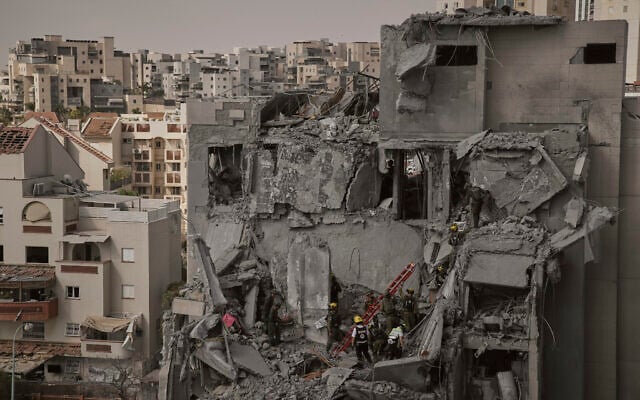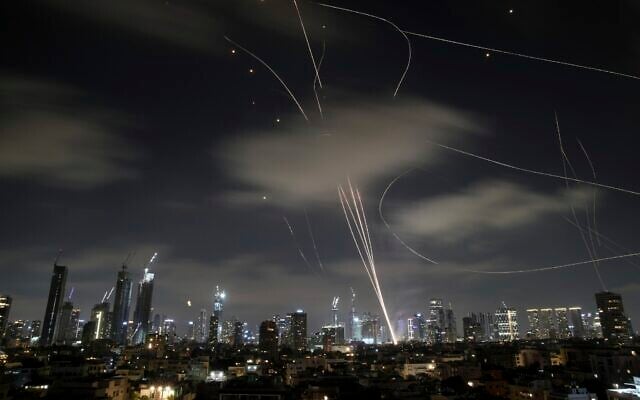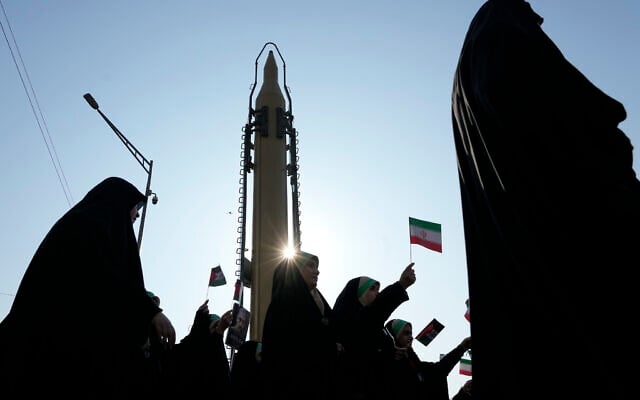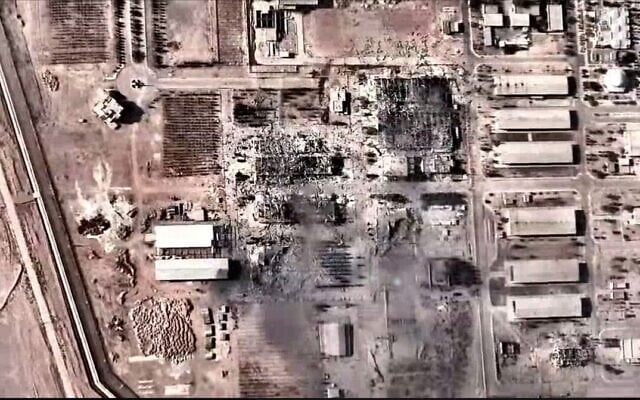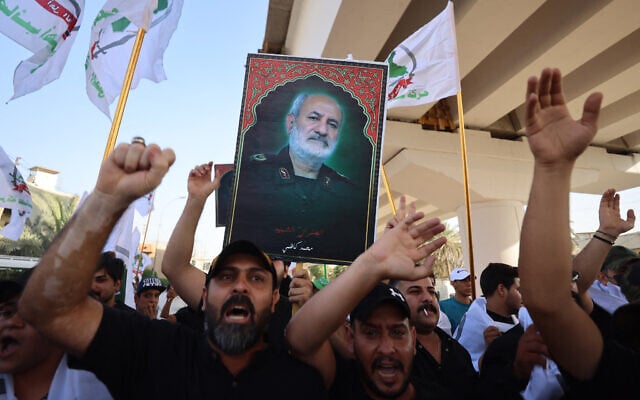


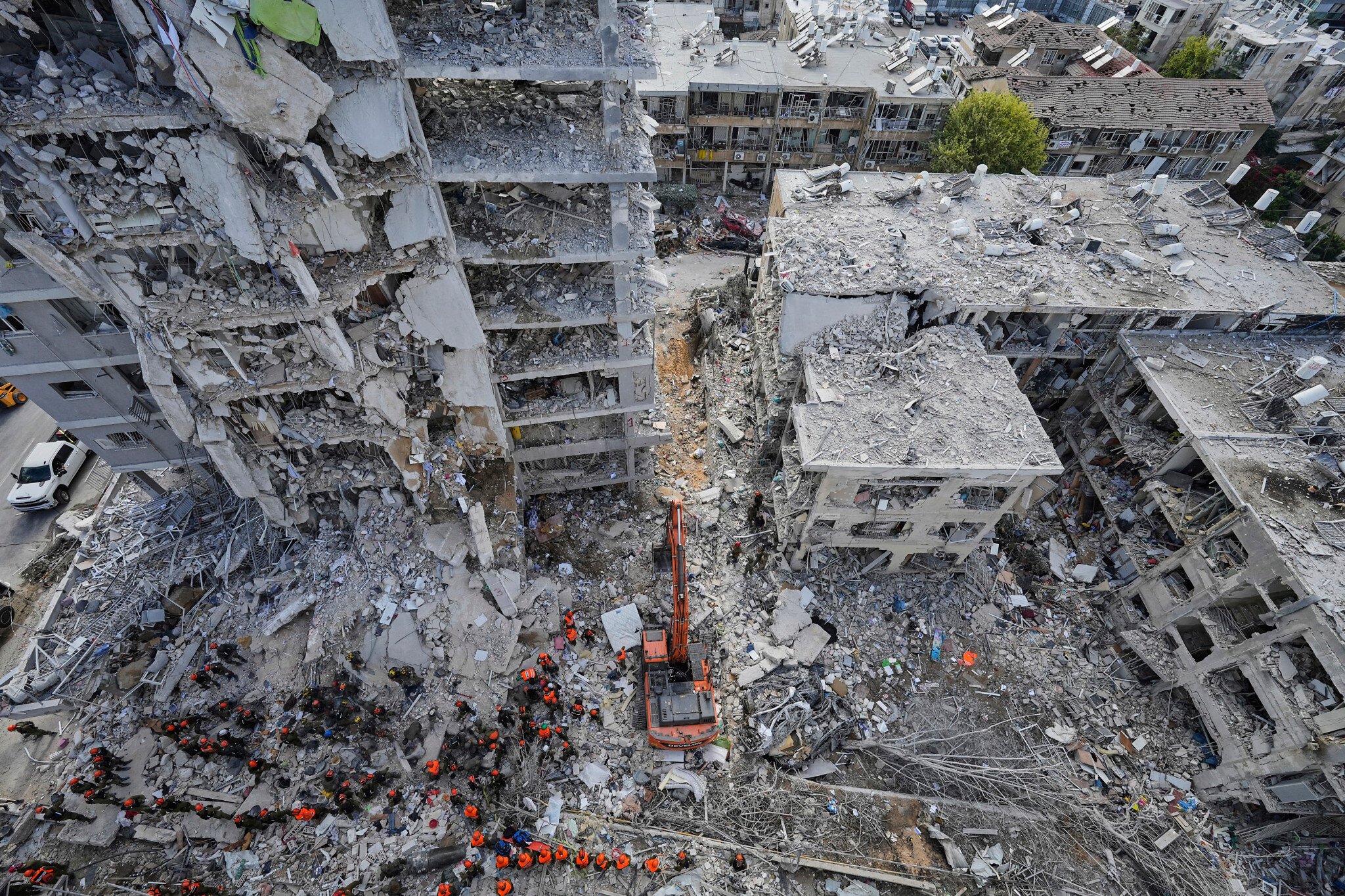
With a shaky ceasefire between Israel and Iran taking effect on Tuesday morning, the full scope of the 12 days of fighting, which started with a surprise Israeli operation against Tehran’s nuclear program, began to emerge.
Two hours into the ceasefire declared by US President Donald Trump, Iran launched two more ballistic missiles at Israel, setting off sirens in northern Israel. Both projectiles were intercepted, and the Israel Defense Forces in response struck an Iranian radar north of Tehran, seemingly ending the conflict.
Iran’s ballistic missile attacks on Israel during the 12 days of war claimed the lives of 28 people — all but one of them civilians — and wounded over 3,000 people.
Israel’s Health Ministry said a total of 3,238 people were hospitalized, including 23 who were seriously injured, 111 moderately, 2,933 lightly, 138 who suffered from acute anxiety, and another 30 whose conditions have not been determined.
The vast majority of the casualties were civilians, with the IDF reporting just seven soldiers hurt in one missile impact in central Israel and an off-duty soldier killed in Beersheba.
Israeli authorities have said more than 9,000 people have been displaced from their homes, dozens of which were damaged or destroyed by the Iranian attacks.
Iran launched between some 550 ballistic missiles and around 1,000 drones at Israel during the war, according to the IDF.
Most of the missiles were intercepted by Israeli and American air defenses at an interception rate of around 90 percent, similar to the rate in Iran’s April and October 2024 attacks on Israel.
At least 31 ballistic missile impacts were reported in populated areas or critical infrastructure sites, including a power station in southern Israel, an oil refinery in Haifa, and a university in central Israel. Dozens of other missiles struck open areas, without causing significant damage.
The vast majority of the 1,000 drones, which are slower-moving but harder to track, failed to even make it to Israel’s borders.
Nearly 99% of the drones that had posed a threat to Israel — around 500 — were intercepted by the Israeli Air Force with fighter jets, helicopters, and ground-based air defense systems; the Israeli Navy with missile boats; and the 5114th Spectrum Battalion with electronic warfare means, according to the military.
Just one drone hit a populated area, a home in the northern town of Beit She’an, causing no injuries.
The IDF Home Front Command said it issued over 21,000 alerts to civilians amid the war.
Iran at the start of the war was estimated to have some 2,500 ballistic missiles and many thousands of drones, according to the IDF.
The military has estimated that some two-thirds of Iran’s ballistic missile launchers, around 250, were destroyed in strikes, along with around 1,000 of the missiles.
This leaves Iran with around 1,000 to 1,500 ballistic missiles, and only around 100 or so launchers, according to IDF estimates.
In terms of Iran’s defenses, the IDF said it achieved aerial superiority over western Iran and Tehran amid the fighting, with over 80 Iranian air defense batteries destroyed.
Iran was unable to shoot down any Israeli fighter jets during the war, despite claims made by Iranian media. However, two Israeli drones were intercepted, the military has confirmed.
The Israeli Air Force carried out over 1,000 sorties during the fighting, with over 600 aerial refueling operations, according to the IDF. Thousands of munitions were dropped on hundreds of targets by IAF fighter jets and drones.
Israel said its sweeping assault on Iran’s top military leaders, nuclear scientists, uranium enrichment sites, and ballistic missile program was necessary to prevent the Islamic Republic from realizing its plan to destroy the Jewish state.
Iran, which avowedly seeks Israel’s destruction, has consistently denied seeking to acquire nuclear weapons. However, it has enriched uranium to levels that have no peaceful application, has obstructed international inspectors from checking its nuclear facilities, and expanded its ballistic missile capabilities. Israel said Iran had recently taken steps toward weaponization.
The military said its airstrikes caused “significant damage” to Iran’s Natanz and Isfahan nuclear enrichment facilities. The US also struck the underground Fordo site with heavy “bunker buster” munitions.
Additionally, dozens of other sites relating to the nuclear program were struck by Israel, including the inactive Arak heavy water reactor, the “headquarters of the SPND nuclear project,” a site where Iran kept its “nuclear archive,” and several centrifuge production sites.
The exact scope of the damage to the nuclear program remains unclear, but IDF Chief of Staff Lt. Gen. Eyal Zamir said Tuesday that “we have set Iran’s nuclear project back by years.”
At least 15 top Iranian nuclear scientists, who Israel said were working on a bomb, were also eliminated in strikes.
Israel’s opening strikes on Iran on June 13 eliminated some 30 senior Iranian military commanders, according to the IDF. Others were killed over the following days.
The dead included the Iranian Armed Forces Chief of Staff, Maj. Gen. Mohammad Bagheri; Islamic Revolutionary Guard Corps (IRGC) chief Maj. Gen. Hossein Salami; Khatam-al Anbiya Central Headquarters (emergency command) chief, Maj. Gen. Gholam Ali Rashid, along with his replacement Maj. Gen. Ali Shadmani.
Within the IRGC, Israeli strikes eliminated the commander of the Guards’ air force, Brig. Gen. Amir Ali Hajizadeh; along with the IRGC air force drone unit commander Mohammad-Bagher Taherpour and his replacement Aminpour Joudaki; and IRGC air force air defense unit commander Davoud Shaykhian.
In the IRGC Quds Force, the IDF killed Saeed Izadi, head of the Palestine Corps, and Behnam Shahriyari, head of the Unit 190 smuggling body.
Hundreds more IRGC soldiers, including numerous members of the Basij internal security body, were killed in Israeli strikes, according to IDF assessments.
Israeli strikes also killed at least 610 civilians in Iran, according to the country’s health ministry.

